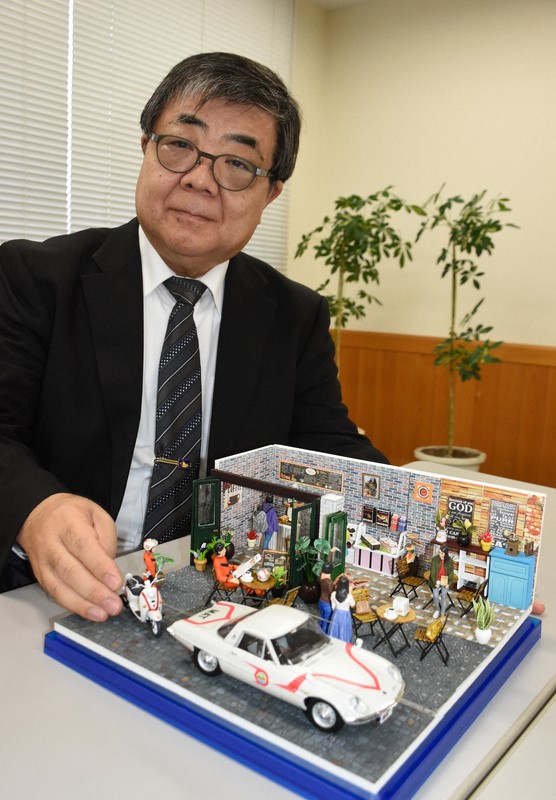
Kazunari Tanaka, director of the Shizuoka City Health Center, talks about his expectations for the use of plastic models in front of his own work in the city’s Aoi Ward on February 21, 2024 at 11:24 a.m. (Photo by Koichi Tanno)
Let’s get out of depression by making plastic models. In February, Shizuoka City’s mental health and welfare facility “Kokoro no Kenko Center” introduced plastic model production as part of its recovery program for patients suffering from long-term depression. Major manufacturers such as Tamiya have their headquarters in the city, which boasts over 80% of the domestic shipments. The initiative that began in this city, which bills itself as the “World Capital of Models”, was due to certain characteristics of plastic models that caught the attention of the facility’s top management.
“Stimulate all senses”
The impetus for this initiative was a night study session for volunteer city hall employees that psychiatrist Satoko Okubo, the director of the program, attended in September 2023. The lecturer that day was Kazunari Tanaka, director of the city’s public health center, whose hobby is making plastic models. The theme was plastic model making.
Director Okubo, who tried assembling it for the first time, said, “Every sense was stimulated by the sound of parts being cut, the prickly feel, and the bright colors of the paint.” He was so immersed in his work that he forgot about the time and the noise around him.
“One of the characteristics of plastic models is that they make you concentrate even if you don’t intend to.Maybe they can be used to help you recover from depression.” There was some basis for that inspiration.
Concentrate on this moment
The “cognitive behavioral therapy” that is the basis of the mental health center’s recovery program includes a method of “focusing on yourself here and now” so that your mind does not become overwhelmed with past failures or worries about the future. be. It is a therapy that is also connected to “mindfulness”, which is derived from Zen meditation.
At the same time, the center also offers a method of “behavioral activation therapy” that “does not act because it is energetic, but acts first.As you do it, you will become more energetic and will become more motivated to go out and interact with people.” I am incorporating it.
Director Okubo thought that “plastic models can fit into any category,” and asked Director Tanaka to teach plastic model making to depression patients at the center. The first production training was held during the recovery program on February 9th and 16th.
A total of seven people participated. They spent about two and a half hours on both days trying to make a mini diorama of the anime “Yuru Camp△”, carefully assembling character figures, outdoor chairs, bicycles, and other items, and coloring them. Some participants worked together to complete their work.
The reception from participants was excellent
When asked in a post-production survey how they felt during the production process, five people said they were “very concentrated,” and the remaining two said they were “somewhat concentrated.” The feedback from the participants was positive, with one commenting, “It was good because I didn’t have to think about unnecessary things by concentrating on my work.” The center has decided to continue production training after April.
Director Tanaka, who served as the lecturer, is 61 years old and has served as a medical engineer for the Ministry of Health, Labor and Welfare for many years. “When he was 40 years old, he felt the need to turn it on and off and started making plastic models, which has served him well.” Although it will be a bit of a departure from his “day job,” he plans to continue serving as an instructor at recovery programs.
“I’m not saying that plastic models will work for everyone, but there is hope for people who are into them. Everyone has different tastes, but Shizuoka has an environment where you can find all kinds of things.” Director Tanaka said, “I want to help people suffering from depression in a way that is unique to a plastic model town.”
Author: Koichi Tanno
Source in Japanese language: Mainichi Shimbun
